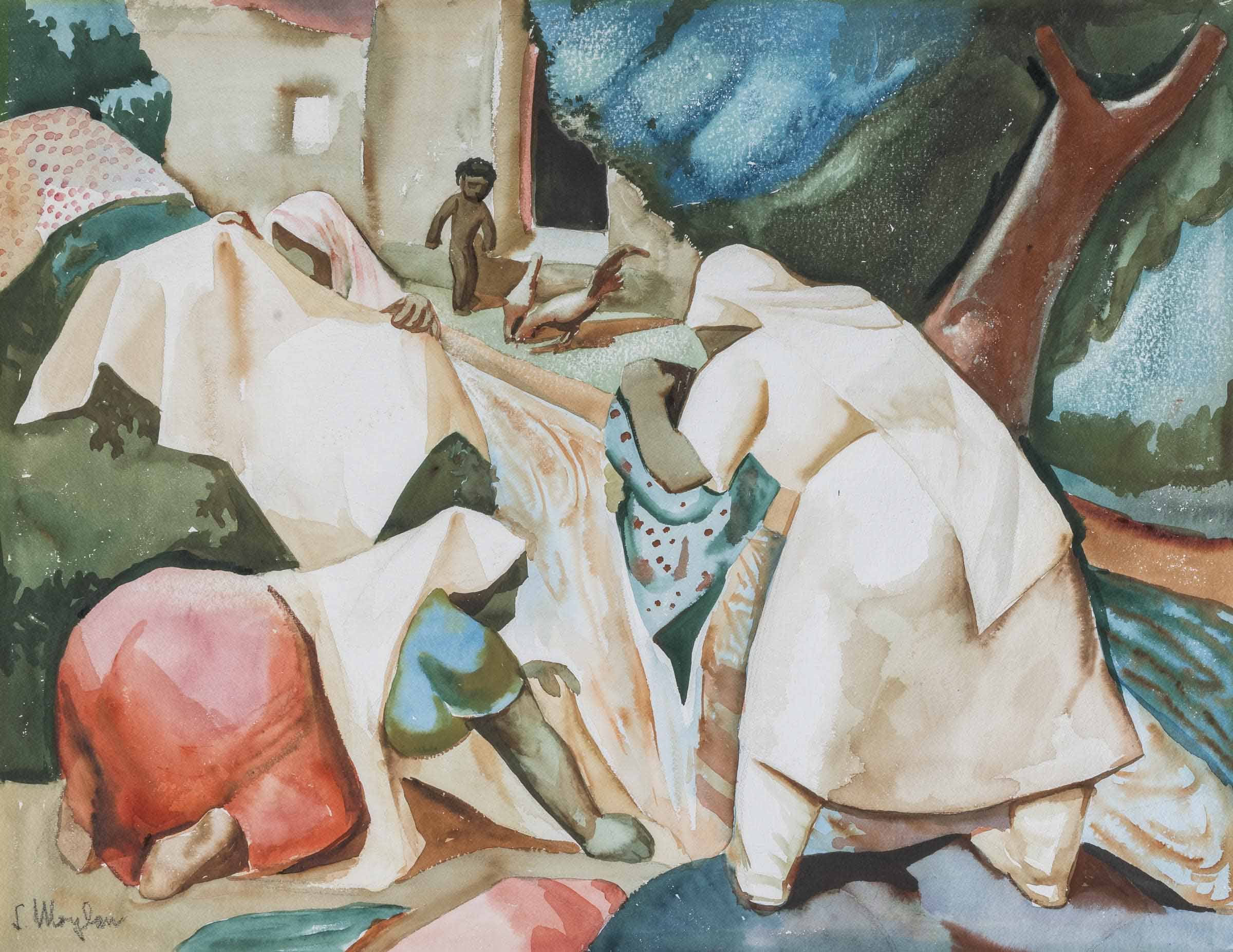Home » Special Exhibits » Lloyd Moylan: The Evolution of Gallup’s Principal New Deal Artist » Pueblo Subjects
Lloyd Moylan: The Evolution of Gallup’s Principal New Deal Artist
Pueblo Subjects
Experimentation with Cultural Expressiveness
In his paintings of Pueblo subjects, Lloyd Moylan took his stylistic experimentations to the next level, seeking to develop synergies between form and content into expressions of culture.
Look Closely
What do these two paintings have in common? How are they different?
Discussion
These paintings show how Lloyd Moylan’s practice evolved. They take after the Return to Order art movement of the 1920s, which emphasized a neoclassical style characterized by monumental figures and white drapery. Moylan apparently saw scenes of Pueblo life as a chance to experiment with yet another artistic trend.
At the same time as he advocated for artistic experimentation, however, Moylan also warned against art for art’s sake. He wrote that a personally driven artistic agenda would result in “isolated” work “of less value to others as it lacks any approach to an understanding.” He believed that artwork should be rooted in place in order to foster human connection: “The only paintings that can be stuck in anywhere are those completely lacking in expressiveness,” he observed.2
One can see the push-and-pull between formal experimentation and cultural expression play out in Untitled (Pueblo Indians) and Household Duties. Untitled (Pueblo Indians) fits squarely in the Return to Order movement style. On the other hand, Household Duties puts a Southwestern spin on that aesthetic. The figures are weighty, but their shapes are softer. They combine the Return to Order style with that of 20th-century Mexican painter Diego Rivera. Moylan reportedly saw Rivera’s murals firsthand on a trip to Mexico. Moreover, the drapery in Household Duties is not purely white-some is colored and patterned; the painting has more color overall.
Perhaps Household Duties was Moylan’s attempt to make the Return to Order movement—which originated in Paris—look more like the Native American culture he was representing (though it is problematic that for a painting of Pueblo people in New Mexico, he took his cues from Mexican cultural influences). It is possible that Untitled (Pueblo Indians) and Household Duties are two different attempts at the same scene: one a purely aesthetic experiment, the other an “approach to an understanding.”


